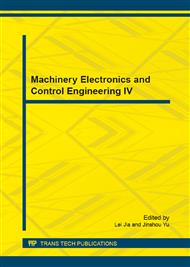p.64
p.71
p.79
p.83
p.87
p.92
p.96
p.101
p.106
Comparison of the Strength Analysis about Single Bogie Frame and its in the Assembly
Abstract:
To take The CRH3 EMU bogie frame as the research object, aiming at the characteristic and mechanical performance of bogie frame, the 3D model of CRH3 bogie frame based on PRO/E are established. According to the standard TB/T 2368-2005 Motive power bogie frame structure strength tests, the load condition is defined. The strength analysis by finite element analysis software ANSYS are carried out in the bogie and single frame . The analysis results show that the maximum stress value of the selected node is less than the permissible stress in both cases, the strength analysis result of the bogie frame is more credible because the load processing is more close to the actual stress.
Info:
Periodical:
Pages:
87-91
Citation:
Online since:
December 2014
Authors:
Keywords:
Price:
Сopyright:
© 2015 Trans Tech Publications Ltd. All Rights Reserved
Share:
Citation:


